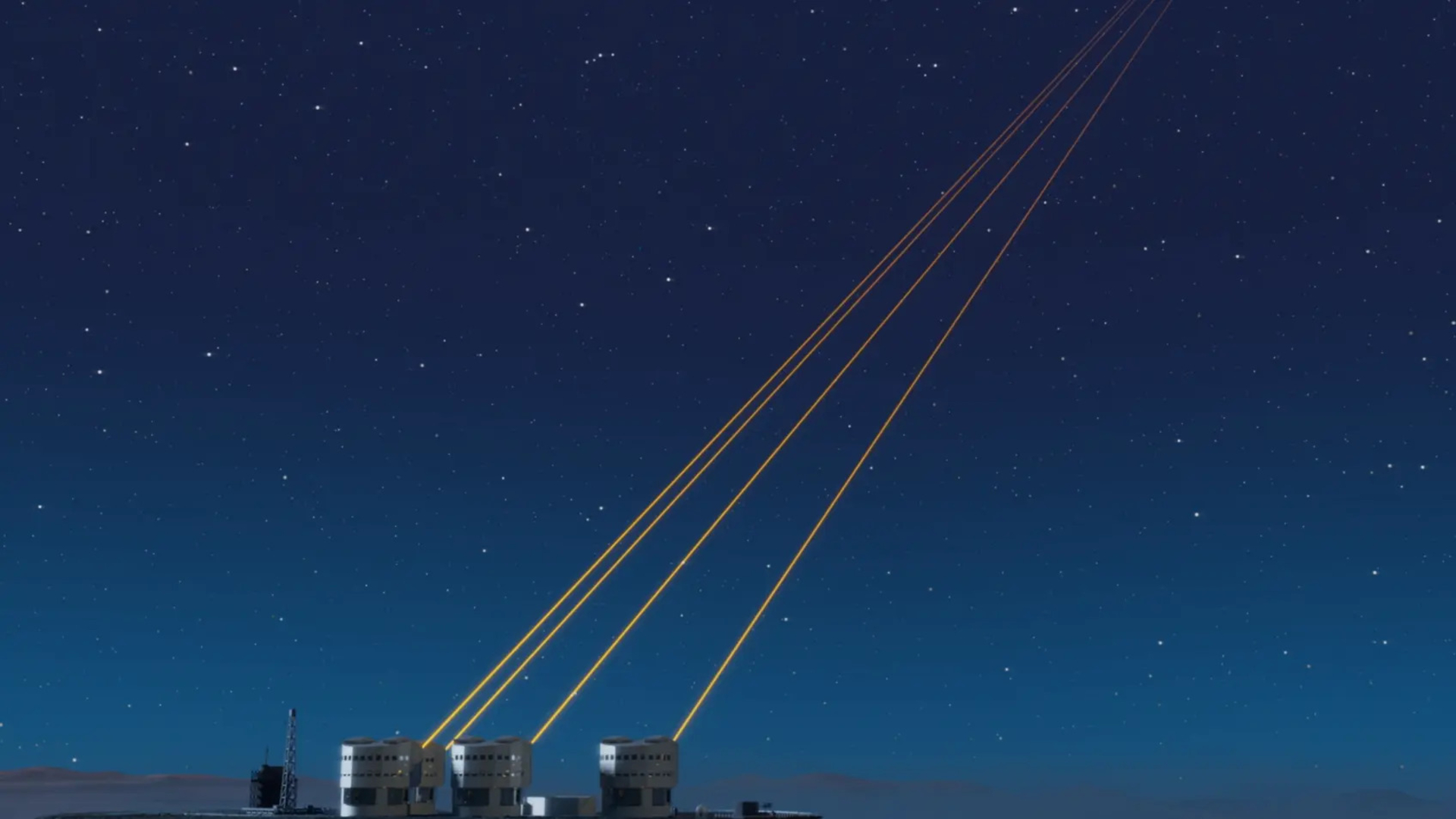'Einstein ring' snapped by James Webb Space Telescope is most distant gravitationally lensed object ever seen
The James Webb Space Telescope has taken a stunning image of a perfectly formed Einstein ring, which is also the most distant gravitationally lensed object ever detected.

Photos snapped by the James Webb Space Telescope (JWST) have revealed the farthest-ever example of an "Einstein ring." The record-breaking halo of warped light, which is a whopping 21 billion light-years away, is unusually perfect and surrounds a mysteriously dense galaxy.
An Einstein ring is an extremely rare type of gravitationally lensed object that was first predicted by Albert Einstein's theory of relativity. Gravitational lensing occurs when the immense gravity of a massive foreground object, such as a galaxy cluster or a black hole, warps space-time around itself; light emitted by more distant objects, such as galaxies or supernovas, that passes through this warped space-time also appears curved and warped from our perspective on Earth.
This effect also magnifies the light of the object being lensed, similar to how a magnifying glass works, allowing astronomers to study distant objects in greater detail than is normally possible. Most gravitationally lensed objects form arcs or partial rings that surround the foreground object. But a true Einstein ring forms a complete circle around the closer entity, which is possible only when the distant object, foreground object and observer are perfectly aligned.
In a new study uploaded Sept. 14 to the preprint server arXiv and accepted for publication in the journal Nature Astronomy, researchers discovered the new eerily circular Einstein ring, named JWST-ER1, within the COSMOS-Web survey, a detailed map of more than 500,000 galaxies captured during a 200-hour continuous JWST observation.
JWST-ER1 has two parts: JWST-ER1g, the compact galaxy that acts as the lensing object in the foreground; and JWST-ER1r, the light from a more distant galaxy that forms the luminous ring. JWST-ER1g is located around 17 billion light-years from Earth, while JWST-ER1r is another 4 billion light-years farther away. Until now, the farthest detected lensing object was around 14.7 billion light-years away, according to BigThink.com. (While the age of the universe itself is estimated to be about 13.7 billion years, the universe's constant expansion means that light from the oldest objects must travel much farther than this to reach our telescopes).
Related: 'Dark universe' telescope Euclid faces some setbacks during commissioning
Thanks to the complete ring of JWST-ER1, researchers calculated the mass of the lensing galaxy by seeing how much it had warped space-time around itself. This revealed that the galaxy has a mass equivalent to around 650 billion suns, which makes it unusually dense for its size. Some of this extra mass can be explained by dark matter, the mysterious, invisible matter that makes up around 85% of all matter in the universe. But even then, it is unlikely that there are enough stars to account for the rest of the galaxy's heft based on the researchers' calculations.
Breaking space news, the latest updates on rocket launches, skywatching events and more!
"Additional mass is needed to explain the lensing results," but it is not exactly clear what this mass is, the researchers wrote in the paper.
Other, similarly old and equally dense galaxies have been detected before, which suggests there is something common about these ancient star factories that makes them so massive. One explanation is that these galaxies harbor much more dark matter than expected, while another theory suggests that they may have more small-mass stars lurking within them than younger galaxies do. But more work is needed to find out.
This is not the first true Einstein ring spotted by JWST. In September 2022, a Reddit user discovered a perfectly circular ring of light from the galaxy JO418, located around 12 billion light-years from Earth, lensed around a closer galaxy.
JWST has also utilized gravitational lensing to snap the most distant star ever detected and one of the universe's oldest galaxies.

Harry is a U.K.-based staff writer at Live Science. He studied Marine Biology at the University of Exeter (Penryn campus) and after graduating started his own blog site "Marine Madness," which he continues to run with other ocean enthusiasts. He is also interested in evolution, climate change, robots, space exploration, environmental conservation and anything that's been fossilized. When not at work he can be found watching sci-fi films, playing old Pokemon games or running (probably slower than he'd like).



